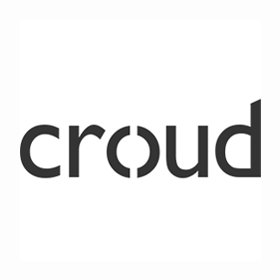
Unpacking The 2024 Meta Holiday Marketing Guidelines
With the holiday season fast approaching, the race is on for marketers to secure a strong ROI. If you are looking to maximise your chance to secure a big win this year, which you probably are, this is just for you! Meta has shared their tips and tricks for 2024 holiday marketing in their 19 pages of marketing guidelines. You can view the full PDF yourself on Meta’s website, however, in this article we will go through some of the key takeaways in four stages, starting from what you should be doing now and the Q5 sales opportunity.
Stage 1: What Marketers Should Do Now
One of Meta’s first recommendations is to prepare early and carefully allocate your budget. As they put it, “Set aside enough budget to show your ads to more people when purchase intent is high,” pointing to key dates like Black Friday, Cyber Monday, and other popular holiday delivery deadlines. While these U.S.-centric sales events might not align perfectly with all global markets, Meta’s core message is that these periods see conversion rates spike, while cost per action dips, making these periods prime opportunities for your ad spending.
Meta’s guidelines also emphasise foundational steps like setting up a Meta Pixel and using the Conversions API to capture high-value customer data and optimise campaigns. Why? According to their data, 54% of festive shoppers discover brands through their platforms. Connecting this data with your Meta channels ensures better campaign optimisation and helps you reach the most relevant audiences.
But it’s not just about the tech. Meta encourages marketers to diversify their audience targeting and campaign objectives, highlighting that different demographics respond differently to holiday sales. For instance, research from Queue-it suggests that Black Friday is particularly favoured by men, especially Baby Boomers, whereas younger generations might gravitate more toward other sales events. It is to make sure that your ads are exiting the learning phase quickly, leading to more stable costs per result and better overall performance.
Stage 2: Experiment to Create the Winning Strategy
Meta’s guidelines highlight the importance of experimentation, particularly through A/B testing. This process is not new to most marketers, but Meta offers a structured approach that can refine your holiday season marketing strategy.
Meta reports that campaigns optimised through A/B testing see, on average, a 30% lower cost per result. To get the most out of it, start with a clear hypothesis tied to your business goals. For example, if your goal is to drive more sales, you might ask, “Does product-focused content drive more conversions than lifestyle content?”
Meta also stresses the importance of testing distinct audience variations. For example, don’t just test 20-22 year-old audiences against 18-20-year-old audiences. Instead, consider more meaningful demographic shifts, such as comparing 18-22-year-olds with 25-32-year-olds. This helps you identify which audience segments are the most responsive to specific messaging.
Another thing is to only test one variable at a time. If you’re testing creative elements, avoid changing audience segments at the same time. This ensures you can identify what’s driving the difference in performance. Keep the test running for at least two weeks, as Meta advises, to allow enough data to accumulate and confidently declare a winning version.
The guidelines also suggest leaning on Meta’s Advantage+ creative tool, especially for Reels ads. Reels have proven to be a powerhouse for user-generated content with strong selling potential—79% of survey respondents said they’ve purchased a product after watching a reel.
Stage 3: Maximise Your Performance
As you head into the peak sales season, your strategy should already be in place, but it’s equally important to stay adaptable. Meta recommends keeping an eye on performance trends without making drastic changes to your campaigns during critical sales periods like Black Friday and Cyber Monday. Significant edits could send your campaigns back into the learning phase, which would negatively affect your results at the worst possible time.
One of Meta’s key recommendations is to avoid the “set and forget” mindset. Even though you may have a well-structured campaign, it’s important to create weekly reports to track key metrics, which enables you to identify underperforming ads and take action, such as reallocating budget or pausing low-impact ads.
Meta also suggests monitoring seasonal trends without overreacting to fleeting fads. If a trend aligns with your strategy, consider making minor tweaks rather than overhauling your entire campaign mid-way. This can keep your performance stable while also ensuring you’re capitalising on emerging opportunities.
Stage 4: Sustain Your Momentum Through to Q5
While the festive period may be over, Meta highlights that 41% of holiday shoppers continue buying well until late January. The cost per 1,000 impressions also tends to dip after the peak shopping days, making Q5 an ideal time to extend your campaigns at a lower cost.
Meta advises creating a sense of urgency during Q5 by running end-of-year sales campaigns to clear inventory and hit any remaining sales targets. You can use click-to-message ads to engage customers directly and offer personalised deals, which can boost conversions. You can also automate the reply to make sure timely responses and keep customers engaged throughout the post-holiday shopping journey.
Another key tactic for Q5 is refreshing your ad creatives. Meta’s Advantage+ creative tools, backed by generative AI, help generate a variety of ad formats and messages to keep your content fresh without requiring significant manual effort. On top of that, you can refer to winning strategies from past sales days to Q5.
Conclusion
Meta has done the hard work for marketers in not only highlighting some of the best practices for holiday marketing but also covering some of their innovations. With millions of businesses scattering around their apps, that does not mean the tools that Meta has can be understood easily.
If ads are on your list for this year’s holiday marketing, checking out the full guidelines does a good job of making sure you are well-versed with Meta’s tools.
About Click Creative
The team of Click Creative is a group of like-minded people dedicated to producing creative, effective digital solutions for our clients. Specialising in custom, bespoke websites, applications, and digital marketing solutions. We bring years of experience, yet bright new ideas to the table every day – we love programming, keywords and coffee!























